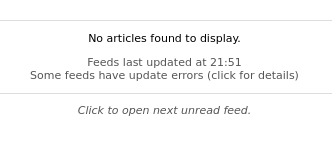THATCamp is being sunsetted, and I’m cross-posting here what I wrote on the Retrospective site.
I attended my first THATCamp in 2009, less than a year before I quit my PhD studies. I descended on CHNM that June weekend wavering between: frustration about the hypercompetitive-hypermasculine-hypercynical world of academic philosophy; and resignation to the fact that I was grinding away on a dissertation that no one would ever read.
It was in this mindset that I first experienced the exhilaration that, in the years to come, I came to identify with THATCamp. The contrasts were stark: Academic life was characterized by gotcha-ism, while THATCamp pulsed with genuine camaraderie. Academic life was rigidly stratified, while THATCamp provided a space where undergrads and grad students and faculty and administrators and career professionals could speak and collaborate as peers. Academic life was deeply conservative in its subject matter and methodologies, while THATCamp felt like an incubator for the new, the radical, the slightly crazy. It was a thrill to be in the room.
The “camp” metaphor was apt. I remember the feeling of being a junior-high-schooler who stifled his creativity and voice during the school year, only to let loose for the week or two spent every summer at music and drama camp. Summer camp brought together individuals who identified as outsiders at home, and provided a platform for them to connect and collaborate, away from the judgmental gaze of the teachers and the cool kids.
The hitch, of course, is that camp wasn’t Real Life. This was part of its magic: When you enter a world where no one has ideas about who you are and the way you should act, and when the cost of failure has been reduced near zero, you experience a kind of freedom and lightness and plain old fun that isn’t possible back in Reality. At the same time, the Unreality of summer camp had a way of setting upper bounds on its ability to directly improve the camper’s Reality – just ask anyone who returned home bragging about their “camp girlfriend”.
THATCamp was unreal in similar ways. The unburdened creativity, the radical egalitarianism, the heartfelt spirit of openness and collaboration – these were able to flourish precisely because THATCamp was an artificial space, away from the structures and strictures of Real Life. This kind of fantasy camp – Unreal as it might have been – had countless positive effects on my non-THATCamp life: friends made, ideas explored, websites built. Indeed, if the only benefit of THATCamp was that it gave us all a chance to blow off steam – to jam – it would have been worthwhile, and totally awesome.
At the same time, the disconnect with Reality had its downsides. The kind of folks attracted to The Technology and Humanities Camp are those who are naturally excited about Technology, and when these people are in a room with their fires stoked, optimism and enthusiasm about technology can ramp up overly quickly. The glory days of THATCamp coincided with – and were typified by the obsession with – the early days of social media; the impending ubiquity of the smartphone; the introduction of the iPad; the mainstreaming of online learning. Considering how these trends have panned out over the last decade (spoiler alert! – mostly terribly) our giddy enthusiasm has not aged well. The pioneer generation of THATCampers was uniquely equipped to think critically and skeptically about the effects of new technologies, on the university and on ourselves. Looking back from the vantage point of 2020, it feels like an opportunity largely missed.
Speaking more personally, the Unreality of THATCamp played a key role in the way my own career unfolded. Those weekends spent in the congenial and optimistic THATCamp atmosphere made it all the more unpleasant to return to the drudgery of Real Life. THATCamp, for me, became one of the lenses through which I could envision a different way of effecting change through my work: the possibility that I might help more people, make a better name for myself, do more good, by building software, rather than by writing philosophy. In time, I came to realize that the Reality of this (alt-ac?) work is not as romantic as THATCamp might make it seem. Yet there is wisdom and beauty in the very THATCamp-y idea that you can forge your own path through – and in and out of – the academic world. For that, I’m grateful to have been a part of it.

